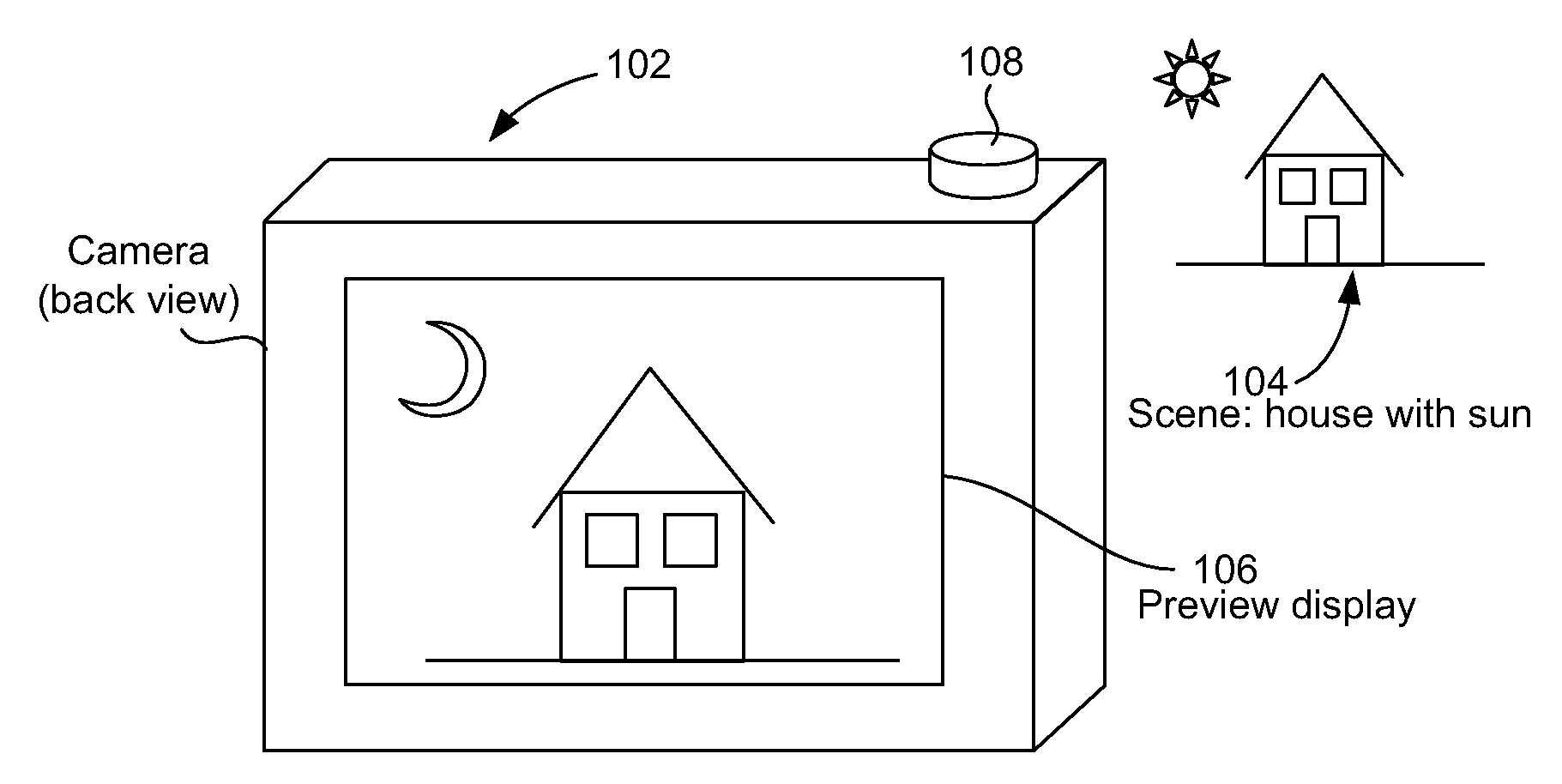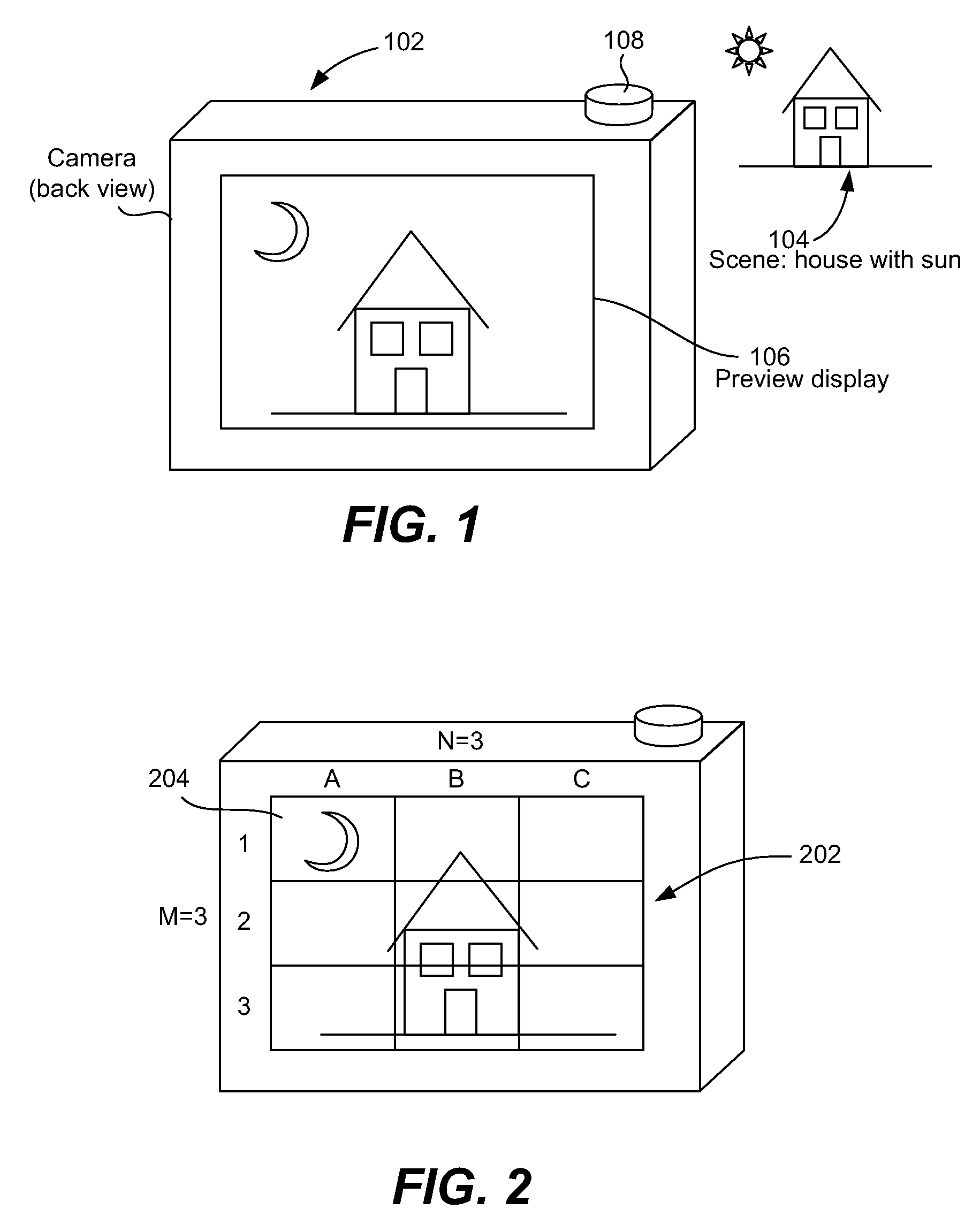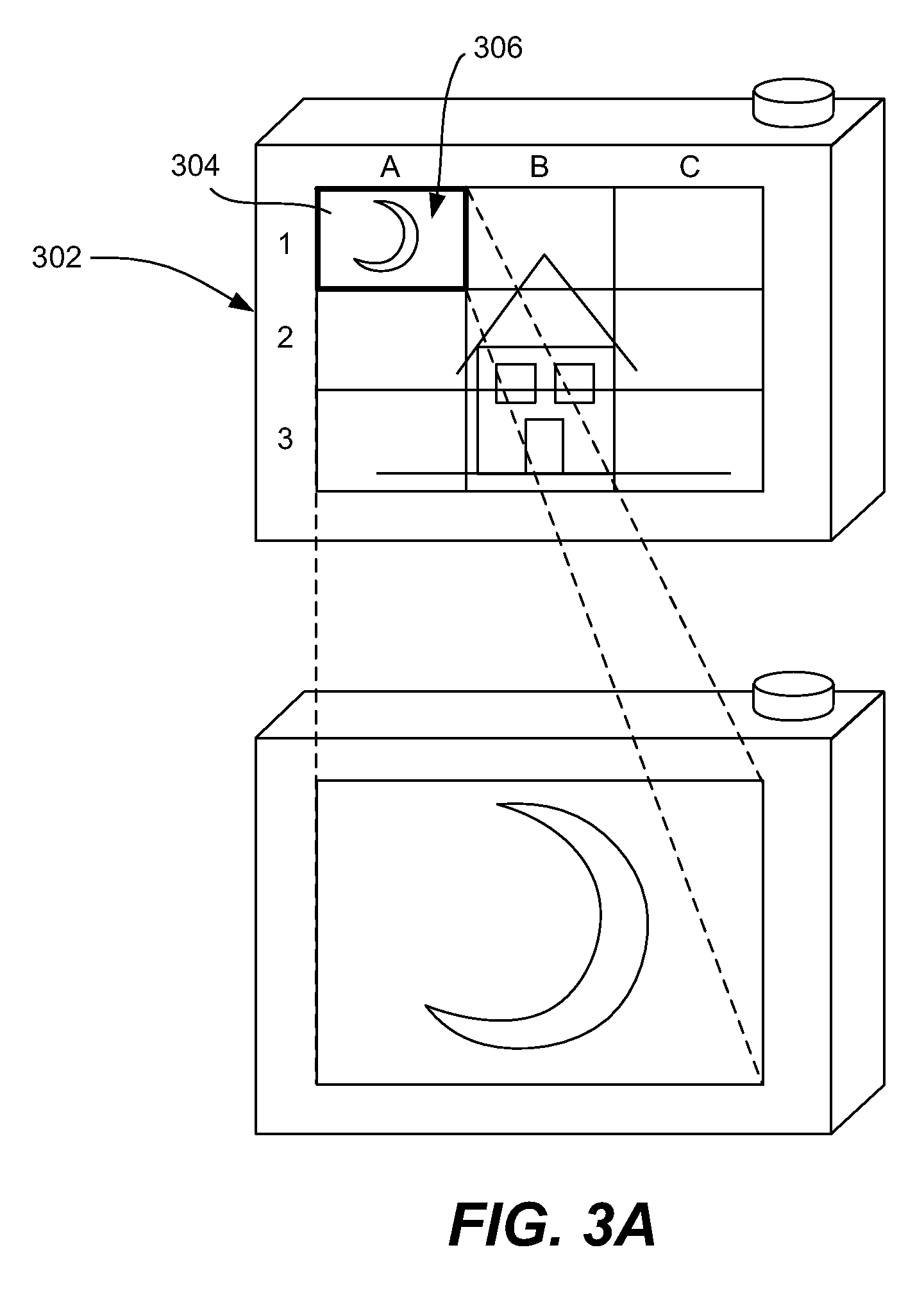Image capturing device for high-resolution images and extended field-of-view images
a high-resolution, extended field technology, applied in the field of digital photographic equipment and software, can solve the problems of inability to increase the fov of the image captured by a digital camera, the way the picture is taken, and the inability to use photo enhancing softwar
- Summary
- Abstract
- Description
- Claims
- Application Information
AI Technical Summary
Benefits of technology
Problems solved by technology
Method used
Image
Examples
Embodiment Construction
[0025]Methods and systems for taking photographs using a digital camera having either a resolution that is higher than the normal resolution of the digital camera or having a field of view that is greater than the normal capability of the camera hardware are described in the various figures. Some of the described embodiments enable a digital camera having a fixed maximum resolution or maximum optical zoom level, to take multiple photos of different portions of a scene and create a larger photo of the same scene having a resolution that is higher than the fixed or native maximum or feasible resolution of the camera. In one embodiment, the term resolution is used to refer to the number of pixels per angle of FOV, i.e., the number of pixels rendered in a 1 degree by 1 degree view by the user, referred to as a solid angle. Other embodiments enable a digital camera having a fixed field of view (FOV), measured in horizontal and vertical angles, to take photos that have a wider horizontal ...
PUM
 Login to View More
Login to View More Abstract
Description
Claims
Application Information
 Login to View More
Login to View More - R&D
- Intellectual Property
- Life Sciences
- Materials
- Tech Scout
- Unparalleled Data Quality
- Higher Quality Content
- 60% Fewer Hallucinations
Browse by: Latest US Patents, China's latest patents, Technical Efficacy Thesaurus, Application Domain, Technology Topic, Popular Technical Reports.
© 2025 PatSnap. All rights reserved.Legal|Privacy policy|Modern Slavery Act Transparency Statement|Sitemap|About US| Contact US: help@patsnap.com



